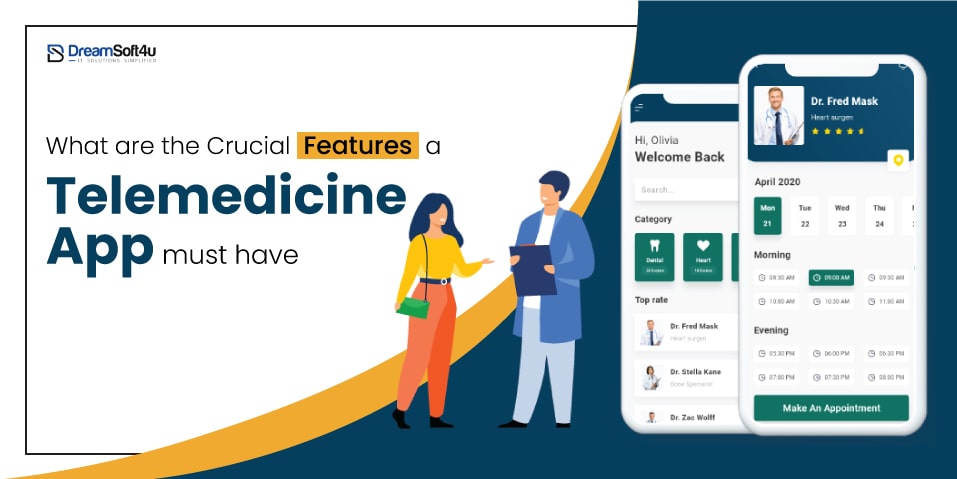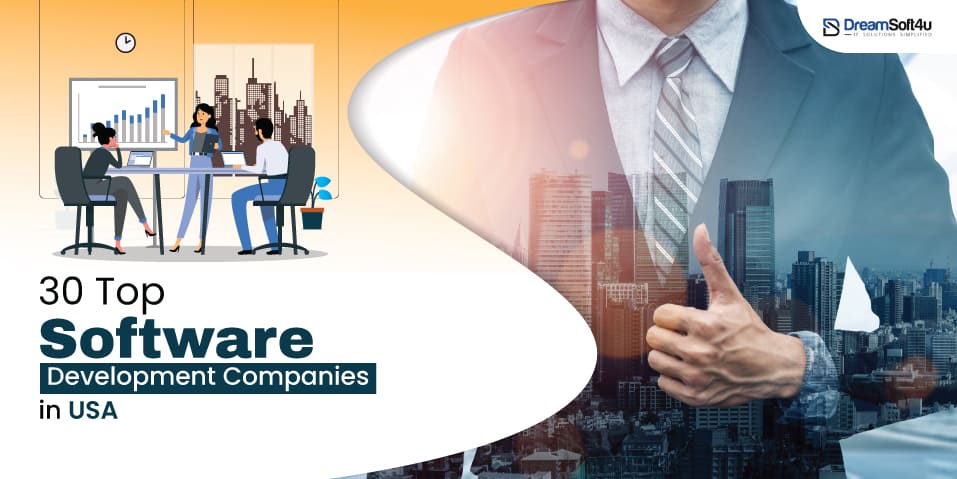Telemedicine facilities are improving the experience of patients and Doctors by providing them with a suitable platform to communicate and talk about health issues. The advanced telemedicine app features enables simple communication between doctors and patients to book appointments, Talk about medical matters, and provide medication slips to the patients.
Nowadays, many healthcare facilities are focusing on developing a top telemedicine app that can boost their business among the competitors’ market and provide the best facilities to their patients. Moreover, besides creating a professional app, it is also necessary that a telemedicine app has some top features that make communication between the patient and doctor convenient. So check out the list of top telemedicine app features and the related elements necessary to develop a professional portal in the healthcare industry.
Table of Contents
ToggleMarket Size of Telemedicine App
The healthcare industry is setting up a new benchmark in the global marketplace. If we talk about the global market worth of telemedicine, the stats for 2022 show around $60.8 billion. However, it has no limitations as the exponential growth of the telemedicine market is rising with a growth rate of 17.16% CAGR. Market trend states that by the end of 2023, the telemedicine market size will be valued at more than $225 billion.
Costing of Creating a Professional Telemedicine App
Leading healthcare companies are searching for the promising potential of creating a telemedicine app that may enhance their customer service and increase their brand value relative to rivals. A simple medicinal healthcare app may run you anywhere from $20,000 to $30,000, depending on its features and specs. However, it can cost between $50,000 and $60,000 to optimize it with the newest features and technology.
Overall, it completely depends on the requirements of the client and how they are willing to optimize their app to fulfil the requirements of their patients. If you look around, the top telemedicine apps are worth more than $100,000 because these apps are optimized multiple times and contain features that are necessary for the mutual connection of doctors and patients.
Most Preferred Software Development Company Since 2003
Request A Free Quote
98% Client Retention
Top 10 Features for a Telemedicine App:
1. Secure Login and User Authentication:
It is the foundation of trust for any healthcare app. Implement multi-factor authentication and industry-standard encryption to protect sensitive patient data. A secure login builds confidence and encourages patients to share their medical information openly.
2. Comprehensive Medical Profile Management:
Give app users a “Medical Home” experience. Permit patients to fill out detailed profiles with information about their allergies, medicines, insurance, and medical history. During consultations, there is less need for repetitive data entry and patients are better equipped to manage their own treatment.
3. On-Demand Appointments with Diverse Specialists:
It’s all about convenience! Provide a user-friendly system for booking appointments so that patients can easily browse doctor profiles, filter by geography or specialization, and make appointments. For flexibility, think about providing both phone and video consults.
4. Secure Real-Time Chat Functionality:
A brief inquiry can sometimes require a shorter video conference. Enable secure chat so that patients can communicate with their doctor for follow-up questions, medicine refills, and non-urgent queries. It enhances both patient happiness and communication effectiveness.
5. Paperless Document Management:
Accept the digital environment! Permit users to upload and save medical records directly within the app, including radiology scans, lab results, and discharge summaries. It promotes a single hub for all health information and does away with the headache of paper records.
6. Intuitive Appointment Scheduling and Management:
Provide patients with a simplified scheduling system that enables them to reschedule appointments quickly, examine their past visits, and receive timely reminders. To reduce the number of missed visits, incorporate email confirmations or push notifications.
7. High-Quality Video Conferencing:
In telemedicine consultations, communication must be very clear. Invest in a reliable video conferencing system to guarantee lag-free, HD video calls. Better diagnosis and treatment plans result from the doctor and patient developing a more intimate relationship as a result.
8. Secure E-Prescription Functionality:
Simplify the prescription writing procedure! Permit patients to use the app to seek refills and obtain new medications electronically. Incorporate pharmacies to guarantee efficient operations and prescription compliance.
9. Secure Messaging Platform:
Beyond simple chat functionality, consider a secure messaging platform for ongoing communication between doctor and patient. It allows for asynchronous exchange of information, sharing images or documents, and facilitating post-consultation care plans.
10. Educational Resources and Self-Management Tools:
Give people the tools they need to manage their health! Include instructional materials about a range of illnesses and good lifestyle practices. Think about adding features for monitoring vital signs, controlling ongoing medical issues, or scheduling prescription reminders. It encourages a proactive attitude toward general health and well-being.
How Telemedicine App Enhanced the Interaction Between Doctors and Patients
Telemedicine app development altered the way patients approach doctors for their medical issues. Now it’s very convenient and easy to reach out to the top doctors worldwide through a professional telemedicine app. In contrast, doctors can easily help patients globally and reach out to the severe causes and illnesses which cannot be treated and identified in different regions. The way doctors and patients communicate has fundamentally changed as a result of the emergence of telemedicine apps. These apps fill the void left by geographical restrictions and hectic schedules, promoting a more practical and effective healthcare experience.
To begin with, on demand telemedicine applications give patients instant access to consultations. The days of waiting weeks for an appointment are long gone; patients may now easily schedule routine check-ups or urgent care with just a few clicks. Accessibility encourages prompt action and early detection, which improves health outcomes.
Second, these apps improve communication in ways that go beyond the conventional face-to-face meeting. Secure chat tools allow for speedy information exchange, follow-up questions, and medication refills. This ongoing communication promotes a more cooperative doctor-patient relationship and gives patients the assurance to participate actively in their care.
Finally, healthcare app development simplifies administrative tasks. With secure platforms, patients can easily schedule their appointments and access various resources through a single domain. From one secure location, patients may maintain their medical data, make appointment scheduling, and access instructional materials. Patients and physicians will have less paperwork to do as a consequence, freeing up more time for them to concentrate on providing high-quality treatment. Applications for telemedicine have fundamentally changed the interaction between a doctor and patient, improving accessibility, effectiveness, and teamwork in healthcare.
Top Perks of Using Telemedicine Facilities
- Avoid the Waiting Room: Say goodbye to squandering time in cramped waiting areas.
- Flexible Scheduling: Make appointments, even on the weekends or in the evenings, to accommodate your hectic schedule.
- View Experts from Anywhere: Make contact with experts who might not be easily accessible in your region.
- Rural-Friendly: Receive timely consultations without needing to travel long distances.
- Proactive Healthcare Management: Address concerns promptly, leading to earlier diagnoses and better outcomes.
- Better Communication: Use secure messaging to ask questions and get answers about treatment plans.
- Potential Cost Savings: Cut back on travel expenditures and, depending on insurance, maybe minimize out-of-pocket spending.
- Effective Appointments: Use telemedicine apps to schedule, get reminders, and pay expenses simply.
- Centralized Medical Records: For convenient access, electronically store and manage your medical records.
- More Time for You: Focus more of your time on the things that really matter and less on commuting and waiting.
Conclusion
The most excellent way for patients and physicians to communicate efficiently through online consultations is through telemedicine apps. It provides an array of features intended to empower individuals and optimize the healthcare system. Imagine a user-friendly app that makes it easier to schedule appointments, get prescription refills, and share private health information. Secure texting also encourages continuous communication between you and your physician, supporting a more team-based approach to treatment. Telemedicine technology will facilitate future access to high-quality healthcare, enabling people to take a more proactive and educated approach to their health.
FAQs
Q1 What features can I expect in a telemedicine app?
Telemedicine apps offer more than just video chats! They act as your healthcare hub, letting you schedule appointments, message your doctor securely, and access your medical records electronically—no more phone calls or hunting for paperwork. Plus, you can request prescription refills and find health information – all within the app!
Q2 Is my information secure when using a telemedicine app?
Security is a top concern with telemedicine apps. Seek those who are committed to it! Your health data is encrypted by reputable applications so that unauthorized parties cannot read it. They must adhere to stringent privacy laws and be HIPAA compliant. Always check for two-factor authentication and secure login features for added protection.
Q3 How do I know if my doctor is available for telemedicine consultations?
It’s very easy to check! Look for a “doctor directory” within your preferred telemedicine app. Search by your doctor’s name or filter by speciality and insurance to see if they’re available for virtual consultations. Alternatively, a quick call to your doctor’s office can confirm if they offer telemedicine and if they use the specific app you’d like to use.






















